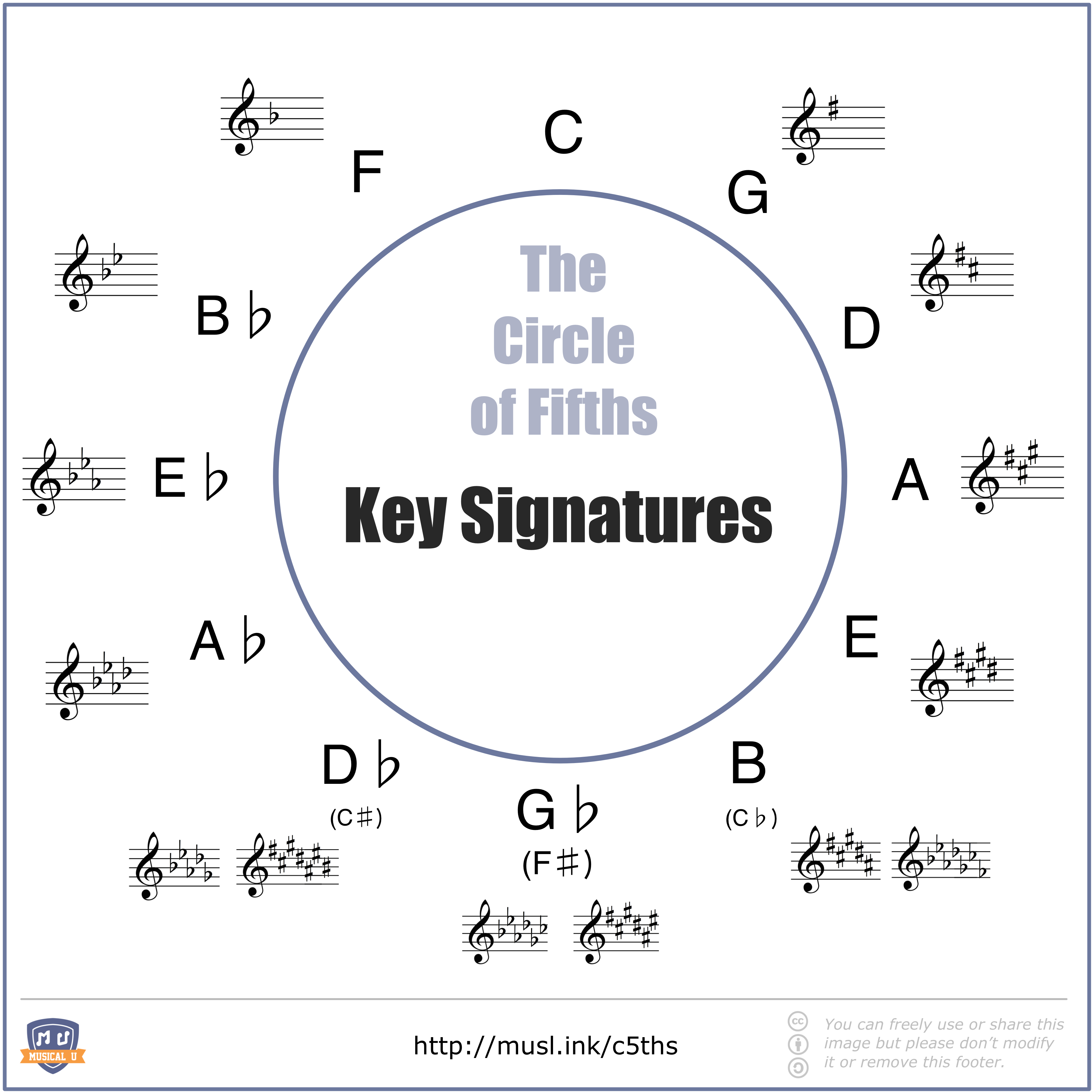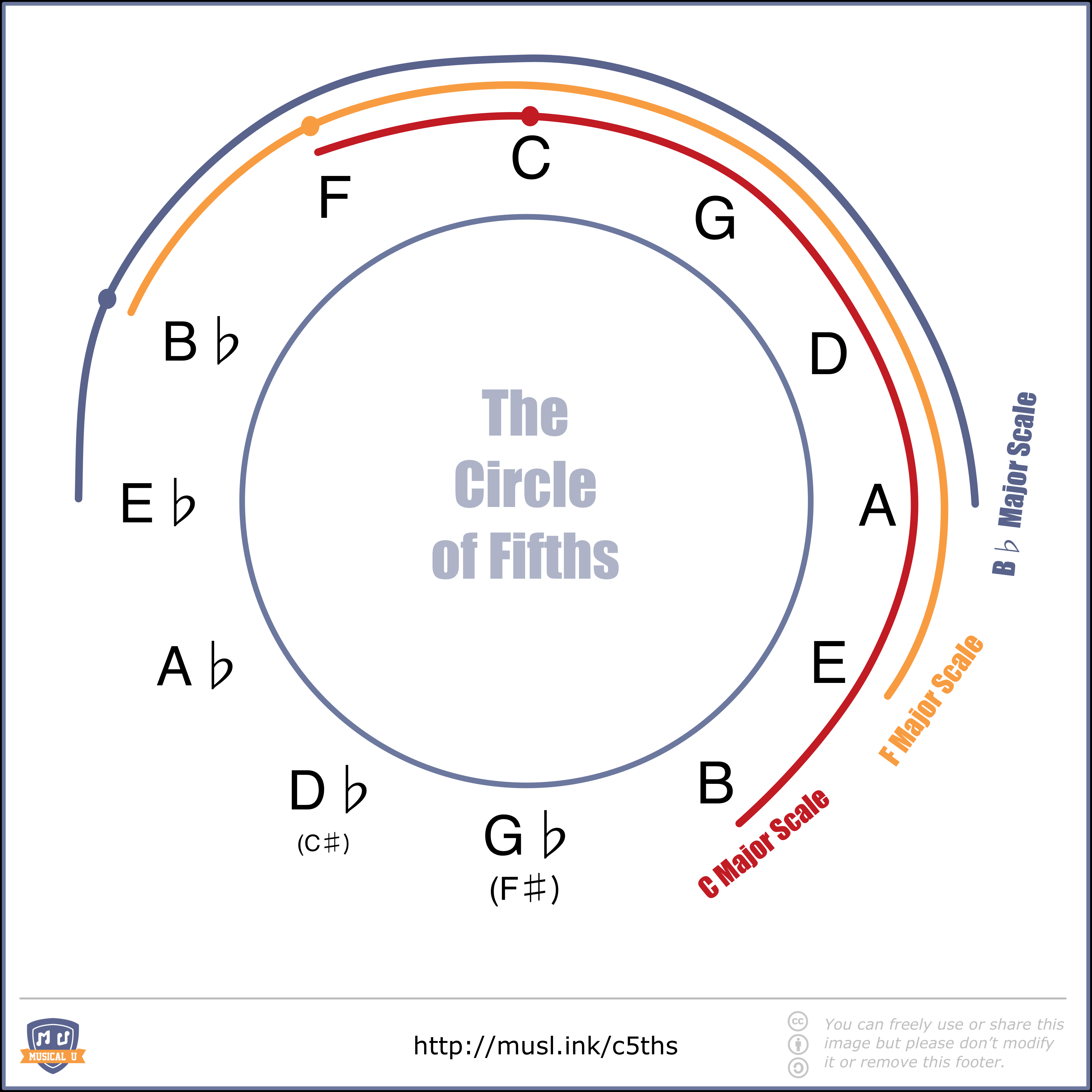The Mathematical Relationship between the Circle of Fifths and Circle of Half-Steps
The circles of fifths and half-steps are closely intertwined concepts in music theory that together help explain the foundation of Western tonality. While visually represented as two separate circles, they are mathematically related involutes of one another.
Harmonic Progressions and the Cycle of Fifths
The circle of fifths is a powerful organizational tool showing the12-pitch chromatic scale’s sequential construction through intervals of perfect fifths. Moving clockwise around the circle, each successive note is a perfect fifth higher than the last. Similarly, moving counterclockwise yields successive perfect fourths intervals. This cyclic pattern of perfect fifths/fourths visits every pitch before returning to the starting note, creating a closed loop. Music frequently uses this circle-of-fifths progression of root movement, progressing harmonically through ever-more distant keys yet still maintaining intuitive coherence through their relation on the circle.

Relative keys and the Circle
Proximity within the circle determines harmonic “relatedness” - adjacent keys share many pitch commonalities while opposite keys share few. Progressions smoothly move between keys with few altered notes like A to D major, yet jarringly shift between opposite keys like A to Eb major. The circle rationalizes why Western listeners find some harmonic successions pleasing and others dissonant.
Scaling the Chromatic Circle
The twelve pitches can be arranged on the chromatic circle so all notes of the C major scale are adjacent. This reveals how much “belonging” non-scale tones have by their position - notes a perfect fifth or fourth from the scale root, like Bb and F#, integrate well while others clash. The chromatic circle succinctly models tonality’s centering gravitational pull.
Relating the Circular Models
While the circles of fifths and half-steps appear independent, they share an intimate mathematical relationship as involutes - mirror images produced through transformation of the other. The interval sequence of perfect fifths/fourths winding around the circle of fifths directly corresponds to the half-step pattern progressing around the chromatic circle. Together they provide dual perspectives on tonality’s foundation in western music.
Resolving Dissonance in the System
The circles elegantly rationalize tonality but require compromises in their mathematical application. Strictly progressing by perfect fifths creates the “Pythagorean comma” dissonance between the starting and ending point. Establishing a uniform tempered scale resolves this by imperceptibly altering interval sizes from their pure ratios. This calibration allowed modulating between any key while maintaining consonance throughout the chromatic scale. The adaptation highlights how theory evolved from physical principles of harmony.
Conclusion
The intertwined concepts of the chromatic circle and circle of fifths are foundational to tonality in western music. Their dual perspectives and mathematical relationship illuminate tonality’s physiological and conceptual coherence. While based on acoustic phenomenon, calibrated adaptations furthered musical versatility. Together, these circular models elegantly conceptualize tonality’s roots and rationalize its intuitive grasp, cementing their significance in musical theory, composition, and analysis.
